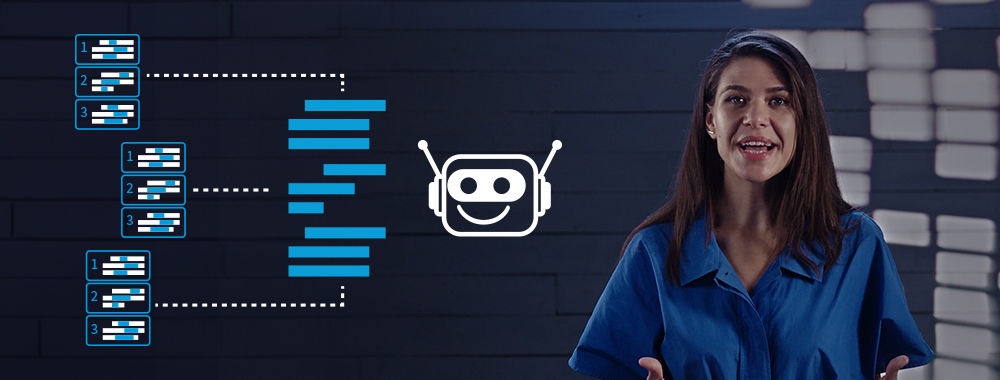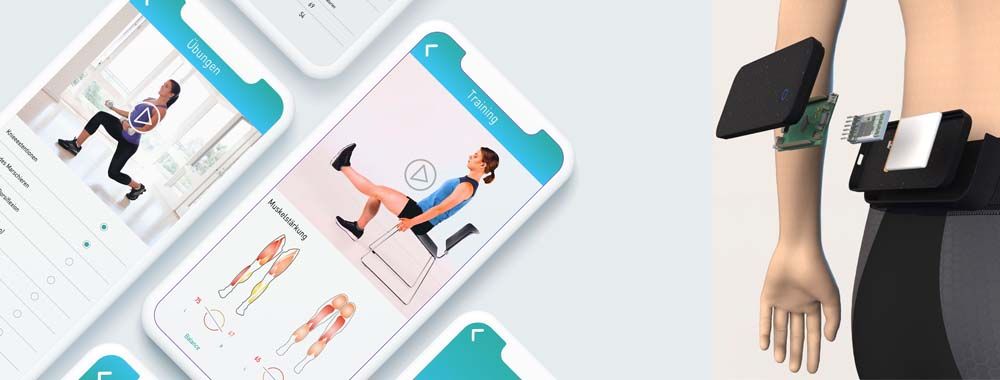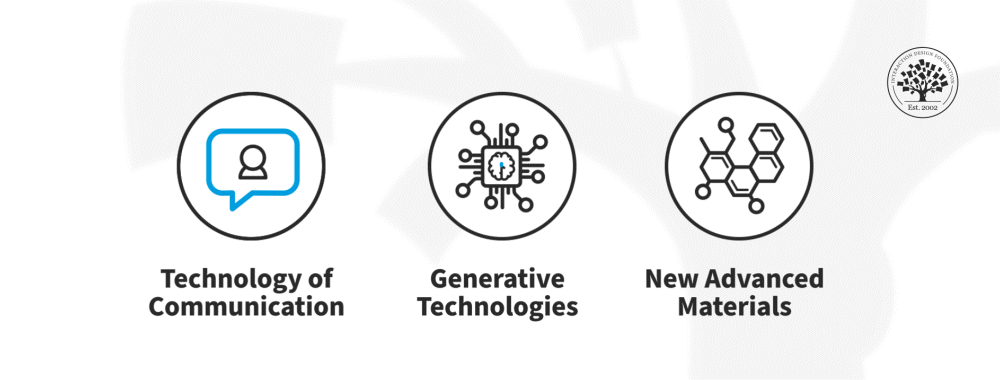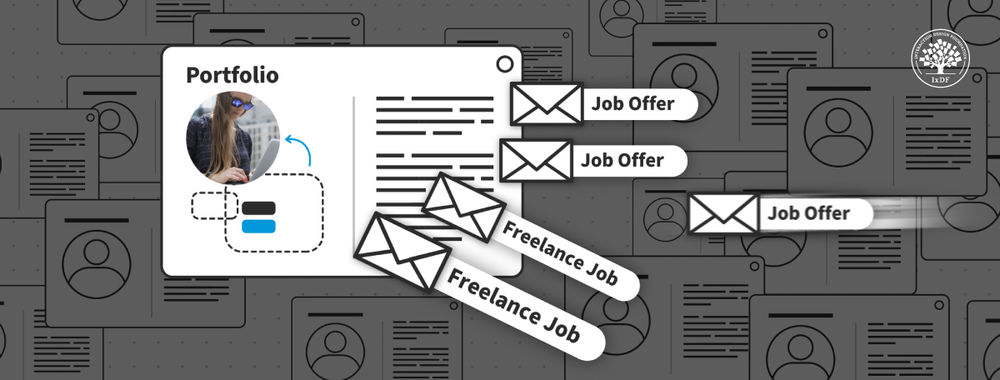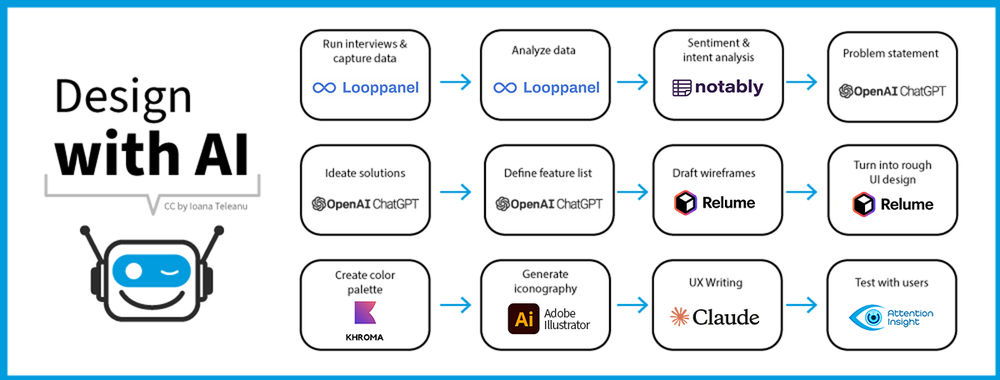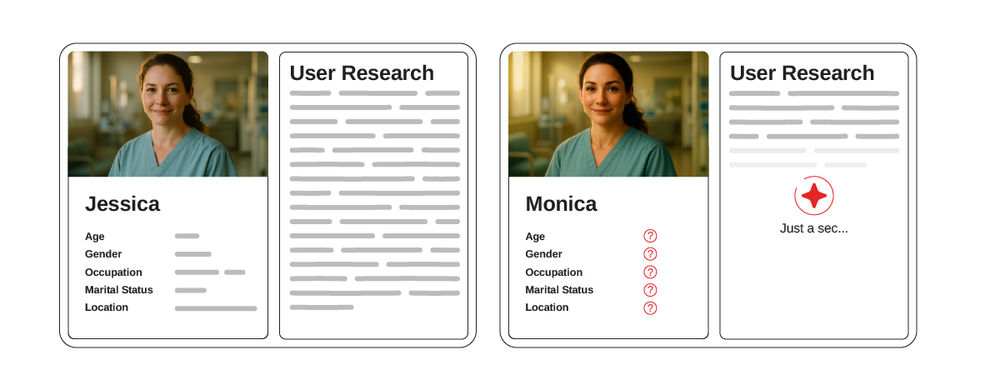If you’re going to collaborate seamlessly with Artificial Intelligence (AI), then you’ve got to master the art of effective communication and, with that, craft prompts that precisely guide the AI to the outcomes you want. Let's look at the complexities of prompt engineering and practical techniques on how to get the results we’re after.
In this video, Ioana Teleanu, Founder of UX Goodies, former Lead Product Designer (AI) at Miro, and former Senior Product Designer at UiPath, shares practical tips on how to create effective AI prompts.
Show
Hide
video transcript
- Transcript loading…
To create effective prompts for AI systems, you’re going to have to understand what the AI's capabilities and limitations are. Here are some key strategies for how you can make the best of your prompt engineering:
Be specific: It’s vital to clearly specify what format you want the AI's response in. So, a particular structure is what you need, then be sure to include that information in your prompt.
Provide context: Especially when you’re working on complex tasks, it’s vital to give the AI context to guide it. You can describe earlier related interactions or describe the current situation you’re in. Examples are incredibly helpful, so it’s wise to show the AI what a correct response looks like.
Iterate and refine: After the AI responds, it’s time to get your prompts refined. If the AI doesn’t produce the output you’re after, adjust your prompts' specificity, tone, or format, and—important note—it often takes several iterations to get the best results.
Experiment and learn: Effective prompt engineering does involve trial and error, so it’s vital to test and refine your prompts continuously. Over time, all this experimentation is going to lead to better outcomes.
Utilize tools: You’ve got helpful tools available to you—like the Prompt Perfect plugin and prompt templates—and they’re resources that can streamline your prompt creation process and really boost creativity.
Prompt engineering for image generation follows a similar process. Specificity and detail are key in getting realistic, usable and non-biased results. In this short snippet from a 1-hour Master Class, Pablo Stanley, Designer and CEO of Musho and Lummi, explains his 5-step formula for better, more inclusive AI-generated images.
Show
Hide
video transcript
- Transcript loading…
Remember, it’s an evolving process to interact with AI. So, be sure to stay curious and experiment—and don't hesitate to try different approaches so you can find what works best for your specific needs.
Use this checklist to make sure your AI prompts are really effective:
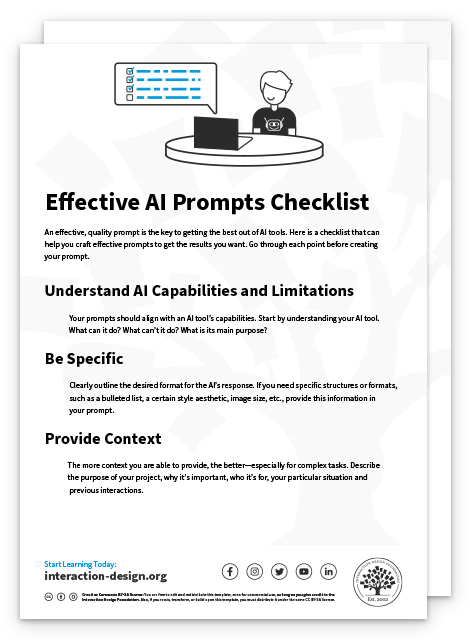

The Take Away
To create effective prompts for AI systems, it calls for a nuanced approach. So, be specific about the desired response format, and make sure you’ve got very clear instructions. Provide context—especially when it comes to intricate tasks—with background information or examples to guide the AI in an effective way. After you get responses, iterate and refine your prompts, adjust the specificity, tone, or format as you need to for optimal outcomes. Embrace experimentation and continuous learning—they’ll be hugely helpful.
One of the things that effective prompt creation involves is trial and error. What’s more, leverage tools and templates so you streamline the process and give creativity a good boost. Human-AI (HAX) Interaction is a journey that’s evolving; so, stay curious, experiment, and adapt your approach to discover what works best for your unique requirements.
References and Where to Learn More
Enjoy our Master Class with Pablo Stanley, How to Create AI Images: On-Brand and Inclusive Photography.
Hero image: © Interaction Design Foundation, CC BY-SA 4.0
